Whilst Santos-Dumont had flown with his famous Cartier watch in 1906, there was a limited need for its functionality as a timing instrument over his 220 metre journey and 21.5 seconds of flight. Planes, dirigibles, and balloons jockeyed for air supremacy, with the course of aviation history shaped forever during seventeen days in October 1910.
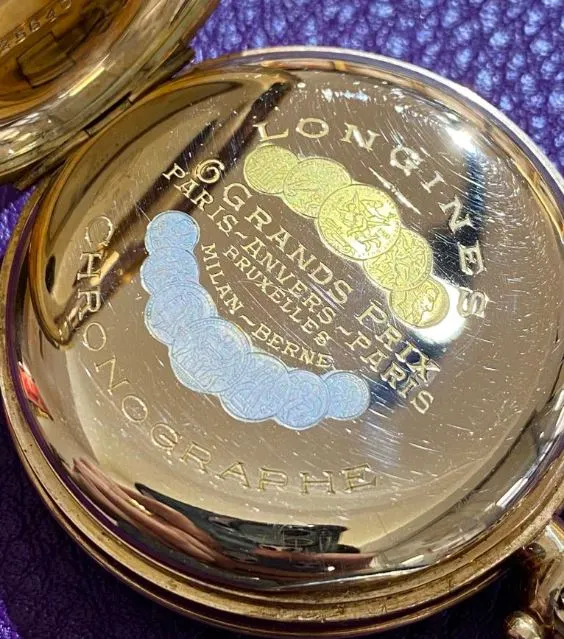
Wellman’s dirigible America required a dramatic sea rescue after an unsuccessful Atlantic attempt, whilst Hawley and Post set a distance record in the Bennett International Balloon Cup, only to be lost in the wilds of Alaska. The winner, the plane – after a nine-day aviation meet at Belmont Park, Long Island.
Twenty-seven international pilots enthralled paying crowds who watched as speed, altitude and distance records were broken. It ended October 27, with the very first ever race over a built up area – around the Statue of Liberty, controversially won by the Frenchman, Henri Moisant.
The accuracy, reliability and prowess of the Longines name was second to none – winning more timing and accuracy awards than any other maker. Their chronometers timed pole and other expeditions, and found fame as specialist instruments aboard ships, bathyscaphes and planes. All of aviation’s greatest feats and records were recorded with a Longines.
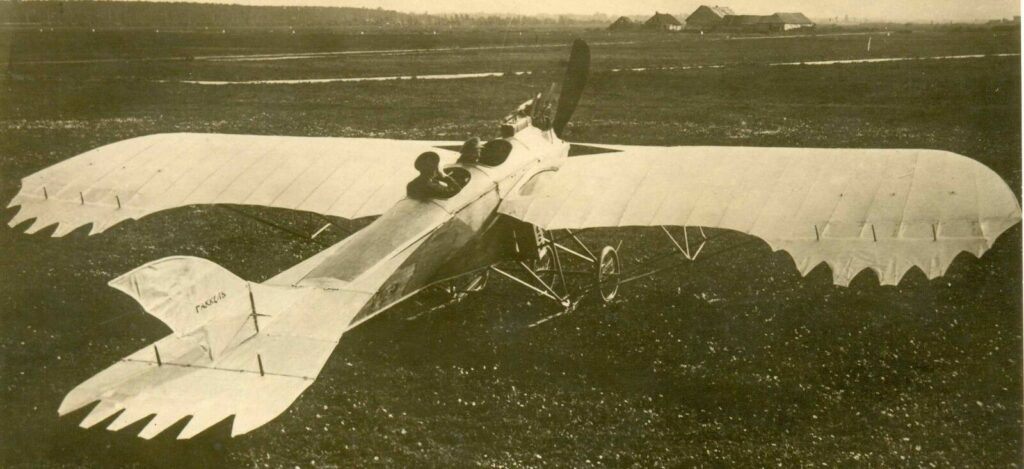
The burgeoning needs of the military and aviation, likely gave rise to the need for a wristwatch in both of these applications. It led to yet another Longines first. In October 1911, archives confirm delivery of the very first wrist chronographs of any maker to Schwob, the agent for Russia. These incredible 48mm oversized pieces used the robust pocket watch calibre, 19.73N. A further thirty pieces of these wrist chronographs initially produced in 1911 were delivered in May 1912, and in the months following.
This incredible group of oversize pieces all predate delivery of the handful of 13.67Z wrist chrono pieces which were first delivered to both Schwob and Wittnauer in October of the same year.
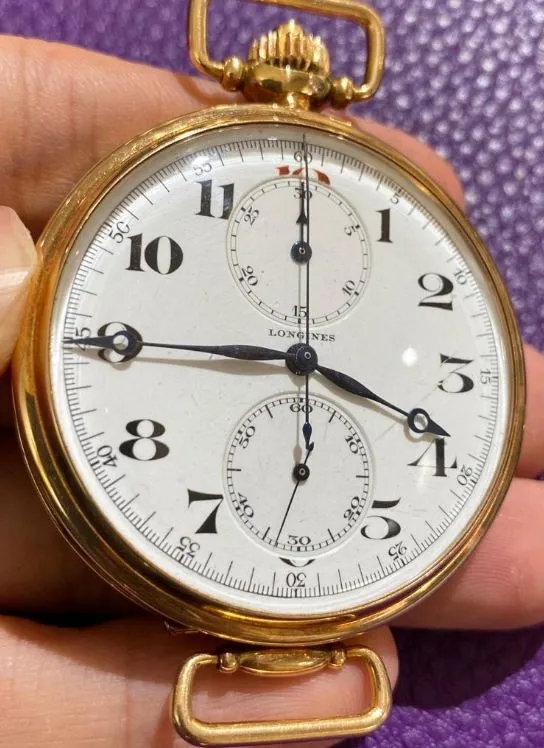
The specially developed 13.33 wrist chronograph caliber followed a year later, preceding the birth of aircraft clocks (calottes), hand chronometers, Weems, Lindbergh, Siderographs and the famous Swiss Air pieces of the fifties.
At the start of WWI the Russian Airforce were the largest in the world with 263 aircraft, whilst the nearest rival, the French had just 148.[1] By 1912 it was known as The Imperial Russian Air Service (IRAS).
The IRAS needs were likely more advanced than its rivals as the world started building up to WWI. Longines likely responded to the Russian needs and modified their robust 19.73N for this purpose.
Recent Longines archives discoveries note the production of three base metal pieces in May 1911 and delivery five months later to the Russian agent Schwob & Fils. The very first of these pieces, with serial number 23121XX, in a 48mm case is the very first wrist chronograph of any manufacturer.
Omega’s first in this space was the ref 168.18 wrist chrono, featuring an 18 ligne movement and oval pusher at six in 1915. This was also the same year that Breitling introduced their oversized wrist chrono with a pusher at two.
Other competitors, Paul Buhre and Henry Moser & Cie, supplied oversized wrist chronograph pieces into the Russian market at a similar time around the start of the first world war.
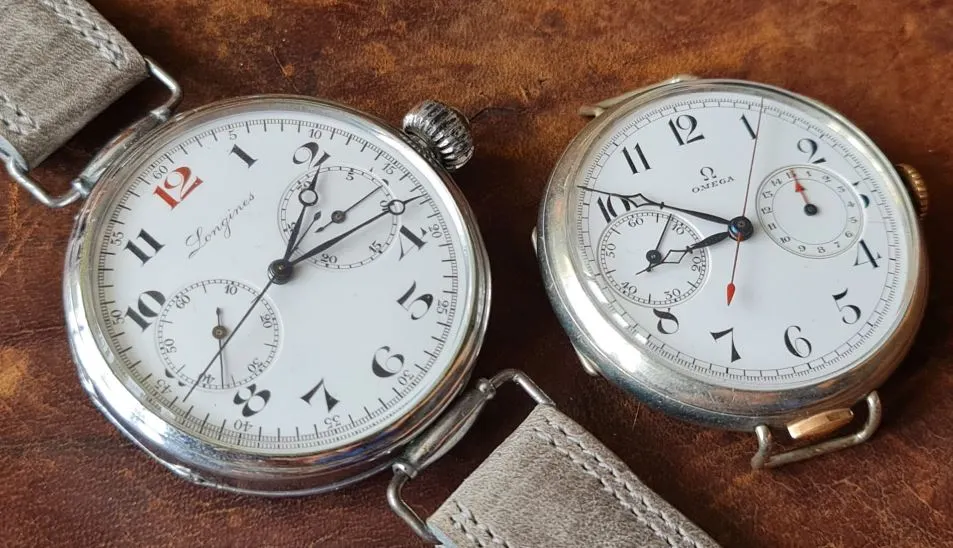
The 1897 pocket watch calibre 19.73 was improved upon with a new thinner execution 19.73N which first arrived to the market in 1909. It was distributed in most configurations, including a split second caliber and in all markets through until 1928.
It was used in aviation calottes, pocket watches and these unique wrist chronograph pieces. An additional thirty of the latter were made in 1911 in base metal, silver including six rare 14k gold pieces.
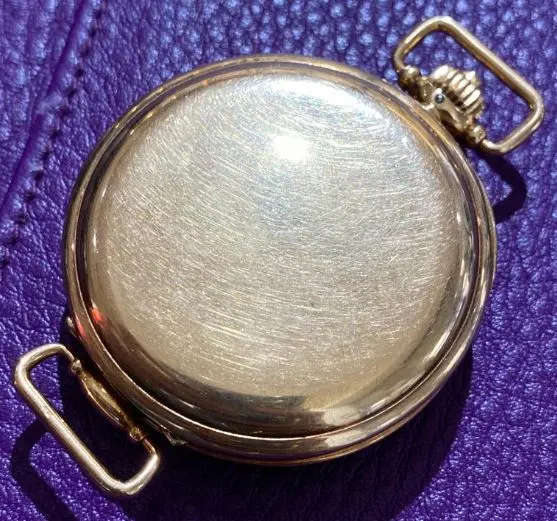
Final delivery of this order was made in May 1912 and the months following. All thirty-three 19.73N pieces predate the delivery of the thirty-six repurposed Longines 13.67Z wrist chronostops which were delivered to Schwob and Wittnauer in late 1912 and all their 13.33 wrist chrono models.
The 19.73N wrist chronographs had impressive oversize two colour porcelain dials and were evenly split between Roman and Arabic text. They featured either a red XII, or the arabic twelve and all featured Longines script. The 30 or 60-minute counter and subsidiary seconds dial registers were configured either vertically (6 and 12) or horizontally (3 and 9).
Crowns were either at twelve or three and archive notes indicate some have the beautiful Longines medals engraved on the inner caseback. They had secured buckles for affixing a strap.
This is also most likely the very last Longines model received under Tsar Nicholas II with a small handful of pieces, including a couple of the rarest configuration, in 14k gold, delivered February 8, 1917. This was just five weeks before his abdication on March 15, 1917.
Two revolutions ripped apart the fabric of Russian society in March 1917 and the second in October lasted for five years.
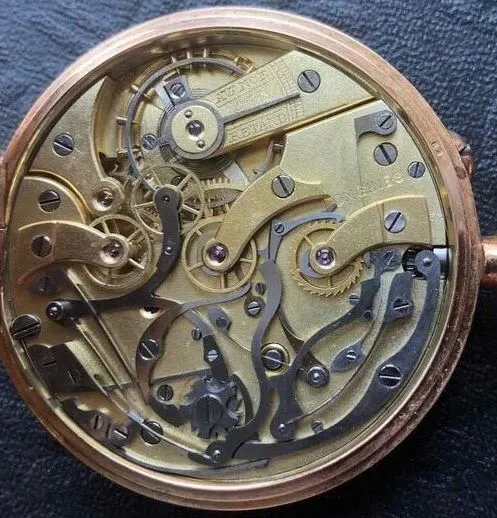
Coupled with WWI, these events were brutal on the Russian population. An estimated 1.7-2.2 million lost their lives in military conflict,[2] and a further two million in the bloody revolutions that continued until 1922.[3]
It is impossible to overstate the wholesale destruction of life, limb and property in World War I and the two revolutions of 1917-1922. The human losses are beyond any descriptive words.
This is one of a number of reasons making oversize Russian 19.73N wrist chronographs one of the rarest vintage Longines ticking treasures.
They are the world’s first wrist chronograph watch and most if not all the watches were most likely destined for military use. Given early Russian air force strengths, quite likely an aviation purpose with a limited lifespan. Very few pieces were originally made and delivered. At time of writing there are less than ten known Russian 19.73N wrist chronograph examples in the hands of collectors!!
[1] History of light aviation of the French Army 1794–2008, Lavauzelle, Collection of History, Memory and Patrimony, Général André Martini, 2005, Paris, pages 36,42, ISBN 2-7025-1277-1
[2] World War I casualties – Wikipedia
[3] How many lives did the Red Terror claim? – Russia Beyond (rbth.com)
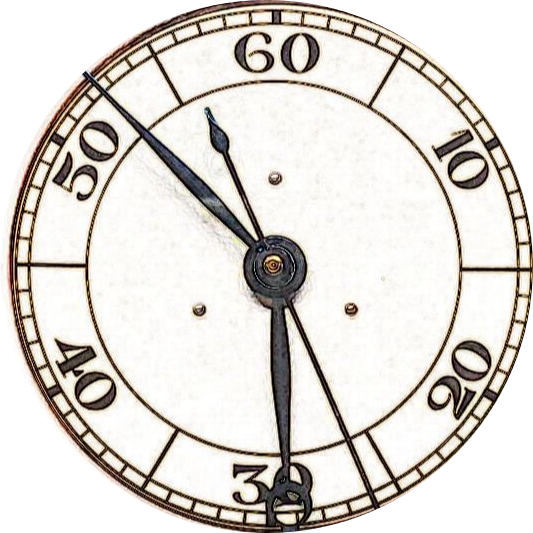
Hello . Great article !
I have recently purchased a longines oversized monopusher.
With some research from longines ..they told me it was sold to Germany in 1929 originally a pilots calotte with aluminium case .. 19.73N MOVEMENT
it was later adapted to be worn on the wrist .the dial has been replaced and the case modified
The dial is cream with some patina around edge
Black hands , with exception to the small chrono dial which has space for lume , so would have stood out in dim light
The watch is currently getting serviced , but has much staining on the movement finish due to the old oils , must of been very long time since was last serviced , but the watch run very well ..these bigger watches must be quite rare , but don’t seem to command values as much as the smaller versions , and before I forget , I did think my watch was Russian also , but have been told it was sold to Germany , and would be interested to see what a calotte looks like and what type of aircraft did they go in
Greetings Mark and many thanks for your comments and feedback and the sincerest of apologies for a belated reply. Calotte could be swapped out for clock. The 19.73N and 19.71 were both used in a range of aircraft clocks. Longines archives note if watch born/supplied as a wrist chronograph in the description and if so whilst having the same caliber are very rare as at the time of birth of the wrist chronograph and really a small handful made. The spitfires used both Longines calibers. Similarly, and my story about Maurice Bellonte and Dieudonne Costes and their Paris to New York flight has calotte/clock pictured. Andy 😉
Hi Andy
I read your article with great interest whilst doing some research on a watch my wife inherited.
I hope you don’t mind me asking for some advice as we can’t find much info about it.
What we have found out is that it’s a Heinrich Kahn (Henry Kan) watch from around 1915 with Longines 15.26 works and, we think, a rose gold case. It’s in very good condition and still keeps good time – just needs a new strap!!
Any advice on value and best place to sell (we’re in Australia) would be gratefully received.
Many thanks in advance
Phil
Greetings Phil and many thanks for your mail. Sounds like you have a wonderful heirloom.. still ticking away after 107 years. I have a mate who is knowledgeable with Henrik Kahn pieces. With that calibre it sounds like 37.5-40mm case size. If you can perhaps confirm the case size or I will know when I see simple pictures of the piece I can give you a better idea of the value and certainly can find a buyer for you. Andy 😉
Bravo, great article.
Happy to see the early Longines chronographs honored and demystified. Not to long ago,many thought these were converted pocket watches modified by the owners.
I have a few Longines with the caliber 15.26.
They are all oversized “trench” watch measuring between 38mm to 40mm.
All were issued by Longines between 1911-16 to Schwob in Russia.
These were huge contrary to the ones popular in the rest of the world.
I guest Russian preferred manly sized watches.
These chronographes at 48mm were even more manly.
Thanks Andy for sharing all this information on aviation and especially the watches used throughout the history of aviation.
Regards
Ken
Greetings Ken and a big thank you for your comments and feedback. Yes I think a lot of discoveries slowly coming to light. Many mistakenly given the modified pocket watch title without a full awareness of their history. Longines only recently discovered that the 19.73N chrono models preceded the birth of the 13.33 chronos. Similarly, the oversized trench watches you note in your collection are equally rare and given the events of world history, it is completely understandable why so few remaining watches have survived today. I have just finished an article about the Japanese military Weems models. There are perhaps only 10-15 survivors out of a little less than 450 pieces. many thanks for your input, interest and comments. Andy 😉
When my father past in 1979. I was left his Longines watch my mother bought for him in the early 1960’s. Since 1979 I have worn this watch everyday. Looks and runs perfect.
Greetings Ralph and wonderful to hear. People develop attachments to family heirlooms and they have a very special meaning. Sadly my grandad’s Longines he purchased in Palestine in 1942 was stolen and wish everyday for its return. Everything we do is has a connection to or measured in time. Would love to see some pics of your treasure, keep ticking, laugh often and lots and and enjoy your Longines
….